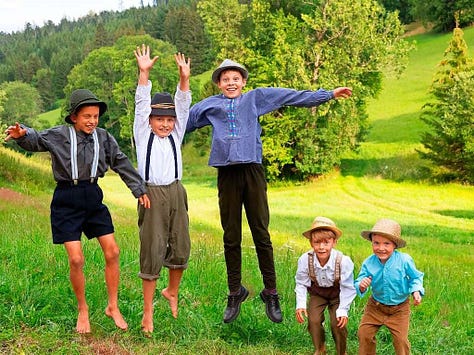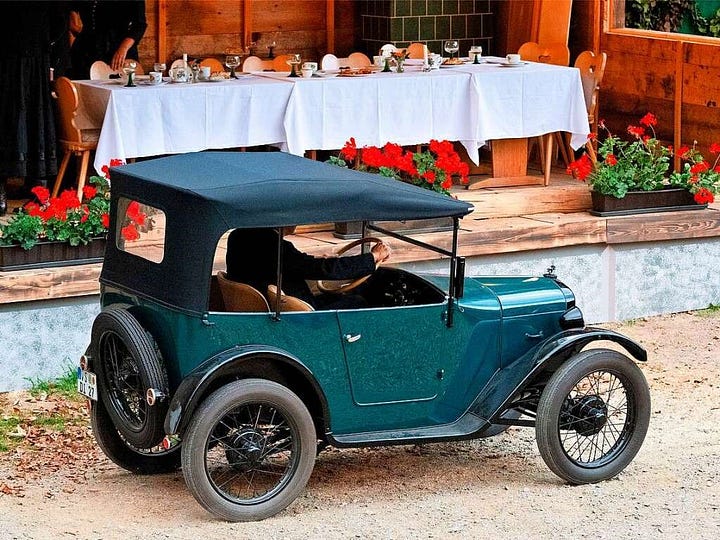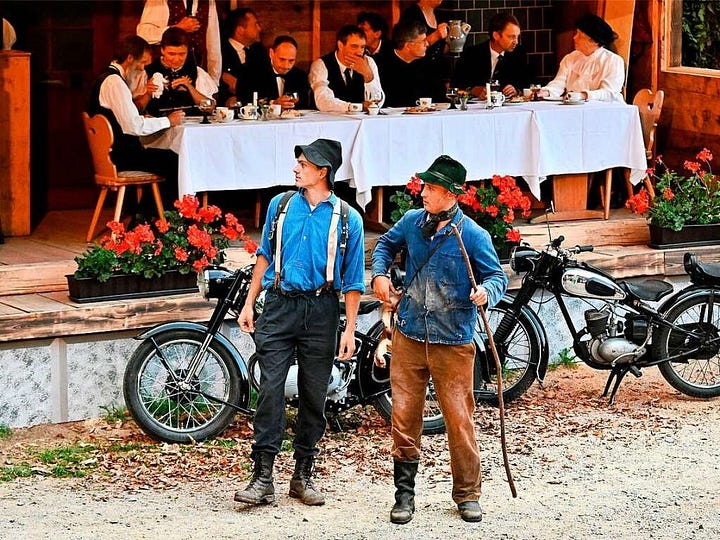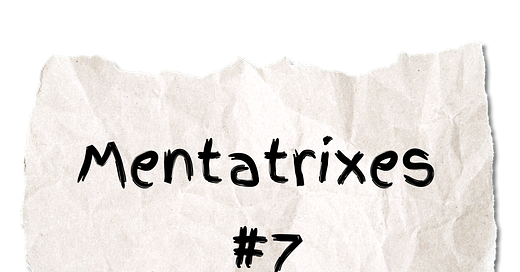Something for your curiosity and something to inspire you to grow.
These past weeks, I’ve seen countless announcements of outdoor events, from live music for all tastes to international cuisine fairs or guided adventure tours for kids.
Summertime at its best.
Especially three events fired my imagination, where I wished I could join in with the crowd.
Follow me reading this, and you’ll have a short reflection task at the end; I promise it’s related to summertime.
Mostly.
So, warm-up exercise: what do these three pictures have in common?



I’ll give you some clues: one of the points below is NOT what the pictures share.
Celebration
Summer
Interesting outfits
Nature
Let me first explain what the pictures show. (The sources are: pic 1, pic 2, pic 3.)
Picture 1: Wine festival in Freiburg
The southwesternmost stripe of land in Germany, a region called Baden (the western half of the German state Baden-Württenberg), includes no less than nine wine-making sub-regions. They stretch mainly along the River Rhine, from Lake Constance, where the Rhine springs from, up to Heidelberg, south of Frankfurt. The largest ones are in the south, around the city of Freiburg.
The Freiburg Wine Festival has a fifty-year tradition and prides itself on tens of thousands of visitors each year. It keeps pace with the times and attracts a young public, too, with offers of wines that are cultivated sustainably.
If there’s a wine festival, there’s a Wine Queen, too. It’s much like a beauty contest, only for expert wine knowledge.
Generally, the candidates work for a regional wine-maker and usually have a degree in wine marketing or production. These three contestants first had to give a specialised presentation, such as the advantages of a regional vine sort. Then, they were expected to recognise three different wines presented in three black glasses.
The Wine Queen and the two Wine Princesses opened the Wine Festival in July; they are going to act as wine influencers and ambassadors and promote wine made in Baden for the rest of the year, both in Germany and abroad.
Picture 2: Open air theatre
It's not a party, but it does celebrate something: local stories of significance. This open-air theatre is a tradition established in the 80s: a real story from the southern Black Forest is put on stage by a team of volunteers, themselves local people.
The community supports their project to ensure the necessary costumes, makeup, haircuts, or props. This year, for instance, the play was set in 1923 and the performance features, among other things, a 1927 BMW Dixi, historical motorcycles and authentic clothing and tools.




The most remarkable thing about this open-air theatre is that it takes place outdoors, with a historical mill farm for a stage set. The same family has owned the "stage set" since 1772.
Far from the madding crowd: 30 minutes away from the nearest parking lot.
No civilisation spoils the illusion of time travel.
Told in the specific regional dialect (Alemannisch), closely related to Swiss German – and very hard to understand for someone like me (!).
This year, the play tells the story of a double murder in a nearby village exactly one hundred years ago. The murderer was prosecuted and got a death sentence; it so happens that it was the last execution by guillotine in what was then the Republic of Baden.
All eight performances, over 4 weekends, are sold out.
Picture 3: A meteorite hike
This is a celebration of a different kind.
It’s an organised night hike to a fortress ruin perched up on a mountain towering over the surrounding hills, to watch the meteorites on the night of 12-13th August, when meteorite showers reach their peak. I wrote about this particular ruin in this post, fantasising around a hostage story that is told around here. It’s a local gem, with a century-long history connected with one of the now extinct noble families in Baden back in the 13-14th centuries.


Participants meet for the hike at 5.30 pm and set off to the ruins with a professional guide, getting there around 8 pm. The sunset is the first highlight, until just before 9 pm.
Among the group is also a representative of the local Astronomy Club, who presents the night sky, points out constellations, and does the storytelling. A telescope is there, too: you can take a look at Saturn’s rings, for example.
The group starts back around 1 am, either back to the meeting place, through the forest, or to a nearby parking lot, where shuttle vans are available, booked specifically for this event.
Nice, but… so what?
I promised a reflection task at the end.
To me, these three events have nature in common. Nature, and how people engage with it.
The Black Forest is, for the most part, a national park. Towns, villages, or settlements are more sparsely scattered than in other parts of Germany, or even Western Europe as a whole. Deep forests, sometimes intentionally set as “Bannwald” (forests left to develop without human intervention), waterfalls, mountain rivers and gorges make up Germany’s most impressive landscape, on such a considerable surface.
And yet, the region is often tagged as “Kulturlandschaft”, or “culture landscape”, referring to the harmonious blend of human settlements, agriculture, natural landscape, and use of resources. On a hike through the Black Forest, forests “naturally” alternate with orchards, vines, pastures, and (often) ancient, once fully autarch farms – like the stage set for the open-air theatre I described above.
Living here, and loving it, I can’t help seeing nature as the common point between a wine festival, an open-air theatre showing a local story in its original setting and in the local dialect, and finally, a night hike to watch the year’s peaking meteorite showers.
There’s celebrating a produce (wine), a traditional way of living, and a cosmic cycle.
These three celebrations embody, as I see them, three different levels we tend to engage with nature:
As a resource-and-workplace: thus, we celebrate wine, but also types of cheese, ham, wool, artefacts made of wood, or whatever our natural setting makes it available to us;
Blended with culture and history, as a stage set for our lives, providing for a livelihood and a way of living; thus, we celebrate traditions involving the local river, woods, waterfall, or chronicles of people and their fates in the area;
As a cosmic cycle: thus, we celebrate meteorite showers, Midsummer, the seasonal changes, or the astronomic solstices.
On which level does your community engage with nature most?
Which level feels most familiar, or comfortable, to you personally?
Would a different level of engaging with nature than what you currently experience give you something valuable? This could be, for example,
Grounding, inner peace, composure
A source of energy, fuel, regenerative power
Solidarity with the local community (this is how we’ve lived, the adversities we’ve overcome, the way we’ve harnessed the givens of our homeland)
A keener awareness of the environment, wildlife, vegetation: their own habitat, needs, and ultimately, their value to us
A sense of proportion: us — nature, us — universe; feeling small can be so reassuring, comforting, regenerating, and with it…
… A sense of humbleness; we don’t need to take on the whole world, nor attempt to change laws that are larger than us.
We come and go, and so do our fortunes.
See? I promised a reflection task to do with summer.
Well, mostly.
That’s it for this week. Thanks for staying with me!






